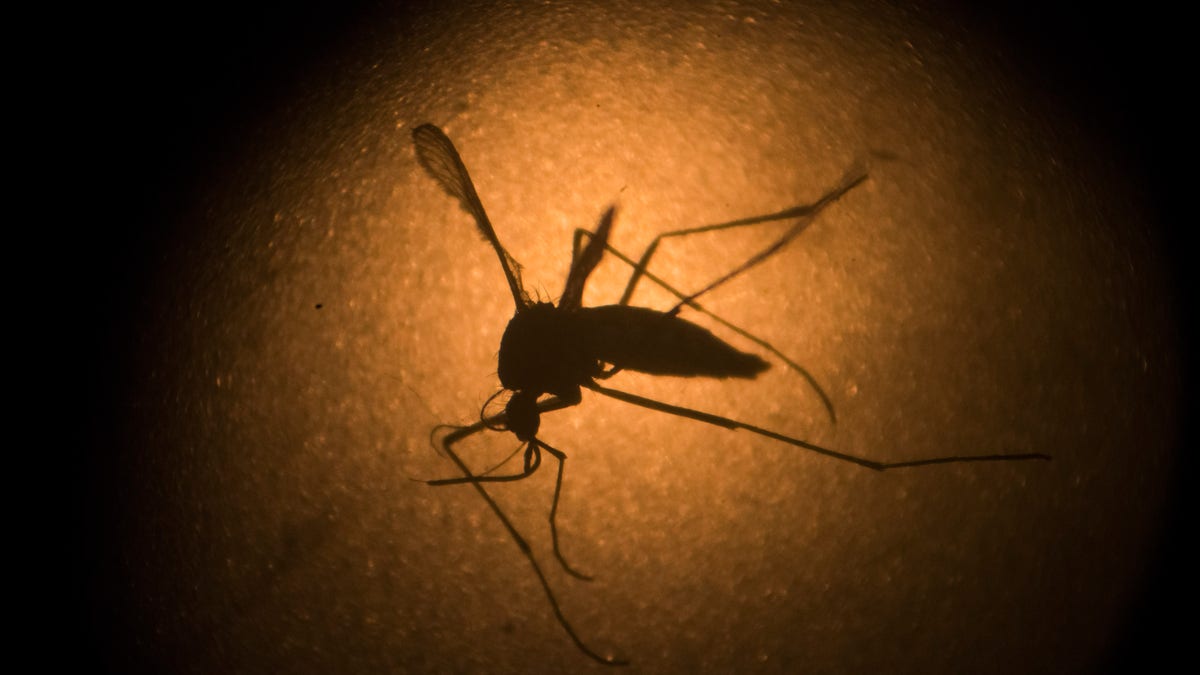
In this Jan. 27, 2016, file photo, an Aedes aegypti mosquito is photographed through a microscope at the Fiocruz institute in Recife, Pernambuco state, Brazil. (AP Photo/Felipe Dana, File)
New York state officials have announced a new plan aimed at preventing the transmission of the mosquito-borne Zika virus or limiting an outbreak if the virus were to arrive in the area.
Part of the plan involves trapping and testing thousands of mosquitoes in New York for Zika. Specifically, researchers will monitor the Aedes group of mosquitoes, which are the major carriers of the virus in Central and South America, where the virus is currently spreading.
Although scientists have not yet determined if the type of Aedes mosquito in New York can also transmit Zika, researchers plan to trap and test about 60,000 mosquitoes in the region per month, according to a statement from Gov. Andrew M. Cuomo.
New York will also distribute free "Zika protection kits" to pregnant women in regions where the virus might spread, the statement said. These kits include insect repellent, condoms (to prevent the sexual transmission of the virus) and larvicide tablets (that can kill mosquito larvae) to treat standing water. Initially, the state will give 20,000 kits to health care providers for distribution to patients.
"The state is taking aggressive action to reduce the risk of Zika transmission in New York," Cuomo said in the statement. "We have put in place a first-in-the-nation action plan that will work to eliminate Zika at its source, reduce potential transmissions and safeguard expectant mothers against this dangerous disease." [Here Are the US Cities at Highest Risk for Zika Transmission]
Although the Zika virus usually causes either mild illness or no symptoms in adults, health officials are concerned about a strong link between infection with the virus during pregnancy and microcephalyin infants. Babies born withmicrocephaly may have an abnormally small head and cognitive impairments. The virus is transmitted primarily by mosquitoes, but there have been cases of sexual transmission as well, and the virus has been found in the semen of infected men.
Transmission of Zika by mosquitoes has not yet occurred in the U.S. — so far, all cases diagnosed in the country have been in people who either contracted the virus while traveling abroad or acquired it through sexual activity with a partner who was infected while traveling.
However, health officials say that a limited spread of the virus is likely in the U.S., because the Aedes mosquito is common in some areas. A recent study suggested that New York City had a "moderate" risk for the local spread of Zika.
New York's plan for Zika is laid out in six steps:
Eliminating mosquito breeding sites by distributing 100,000 larvicide tablets throughout the region;
- Deploying mosquito traps in 1,000 locations per month;
- Distributing Zika protection kits to pregnant women;
- Deploying a "rapid response team" if Zika transmission by a mosquito is confirmed, which will inspect surrounding areas and develop an action plan;
- Requiring all local health departments to submit an action plan for Zika, if Zika is found mosquitoes in the area; and
- Launching a public awareness campaign, which includes a Zika information hotline.
People can protect themselves against mosquito bites by wearing long-sleeved shirts and using mosquito repellent that is registered with the Environmental Protection Agency.
- Defeating Zika: The Big Questions Researchers Are Trying to Answer
- 5 Viruses That Are Scarier Than Ebola
- 7 Devastating Infectious Diseases
Copyright 2016 LiveScience, a Purch company. All rights reserved. This material may not be published, broadcast, rewritten or redistributed.




















